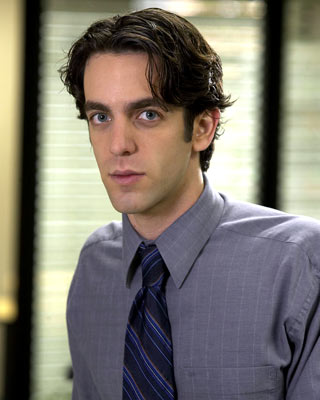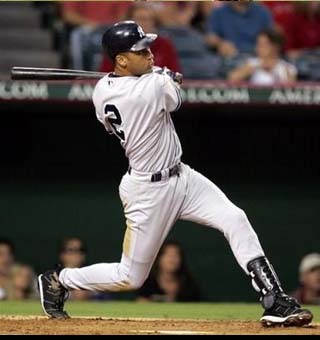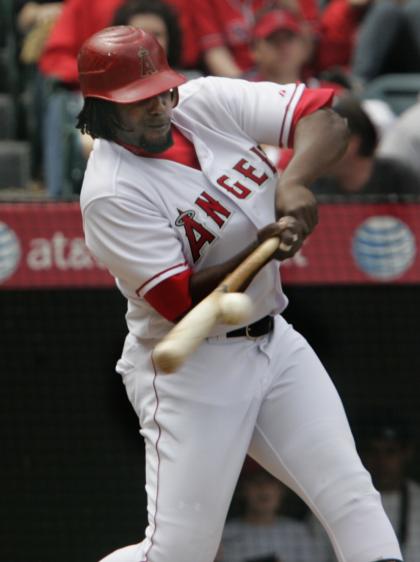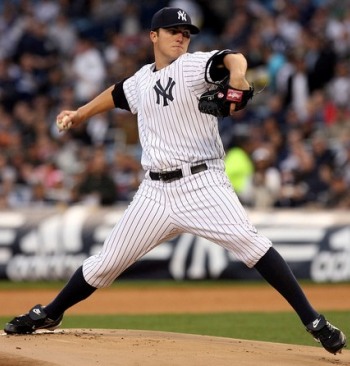Most of this material was penned almost four years ago, but since Frank Thomas announced his retirement today, I thought it might be worthwhile to freshen this up a bit.
There's been some discussion and debate over the last few years about whether Frank Thomas really belongs in the Hall of Fame. Based mostly on the fact that the second half of his MLB career constituted such a severe drop off from the level he established in the first half, many have said that he'[s only a marginal candidate.
This is poppycock.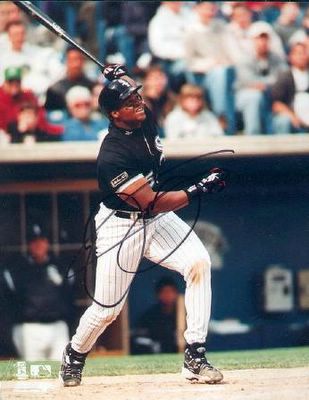
Frank Thomas 
This is about the silliest thing I've heard all week. I could understand if they were saying that Frank Thomas, moderately productive outfielder of several 1950s and '60s National League teams, didn't belong in the Hall of Fame. That Frank Thomas hit .266 in 16 seasons, never hitting .300 in any of them, finishing in the top ten of the MVP ballot only once (4th in 1958), and never leading his league in anything but games played, hit-by-pitch and sacrifice flies (once each). That Frank Thomas certainly doesn't belong in Cooperstown.
But this one? The Big Hurt? The 1B/DH who has terrorized American league pitchers for the last decade and a half? Let's look at his credentials, along with someone else's, shall we?
Name AB R H 2B HR RBI
Hurt 10074 1494 2468 495 521 1704
Splint 9791 1798 2654 525 521 1839
Name Avg OBP SLG OPS OPS+
Hurt .301 .419 .555 974 156
Splint .344 .482 .642 1116 191
The 'Hurt' line is, of course, Frank Thomas' career. The second line is that of the Splendid Splinter, Ted Williams. Four years ago I compared these two, up to a similar point in their careers, and now it turns out that they will both complete their careers with exactly 521 home runs. I'll be issuing lottery predictions for 2014, later tonight, thank you.
In all seriousness, though, are they the same? Of course not. Nobody was as good as Ted Williams, in his generation or any other, save perhaps Ruth and Bonds. But are they close? You're damn right they are. Williams had a few more of just about everything, but not a lot more of anything. He struck out a lot less, but so did everyone else at the time. Pitchers throw harder now, and relief pitchers are trained to get the strikeout, with Thomas having to face them much more often than Williams did.
The second set of stats, their averages, shows a much greater difference between them, but it also shows something else. That last statistic is park and league-adjusted OPS (On-base plus Slugging), a rough but effective measure of a hitter's prowess. Ted Williams ranks second all time, behind only the Babe. Thomas is tied for 19th, with 13 of the 20 guys who are either tied or ahead of him already in the Hall.
Among the other seven, four are not eligible for Cooperstown because they didn't play at least ten seasons (Dave Orr), are banned from baseball for gambling issues (Shoeless Joe Jackson) or have not yet been retired for five years (Albert Pujols and Barry Bonds).
Bonds' case is a little sketchy, given that of Mark McGwire, who's also ahead of Thomas on the OPS+ list, but who has failed to garner more than about a third of the votes he needs in his first three seasons on the ballot. But based on numbers alone, both Bonds and McGwire are no-doubt Hall of Famers.
The sixth is Dick Allen, who was a heckuva hitter, but who played only a dozen full seasons and who was basically washed up by age 35. Also, as I understand it, he was kind of a jerk to the sportswriters, but then they didn't exactly hold that against Ted Williams.
The last is Pete Browning, who played almost half of his ~1,200 game career in the 1880s American Association, beating up on sub-standard pitching while all the best players were in the National League.
Thomas is one of only 14 players to hit over .300/.400/.500 in a career of over 2,000 games. Almost all of the rest are in Cooperstown or will be some time soon. Here's that list:
Already in the Hall of Fame:
Cobb, Ty
Foxx, Jimmie
Gehrig, Lou
Heilmann, Harry
Hornsby, Rogers
Musial, Stan
Ott, Mel
Ruth, Babe
Speaker, Tris
Williams, Ted
Still active or recently retired (years played):
Thomas, Frank (19)
Martinez, Edgar (18)
Ramirez, Manny (17)
Jones, Chipper (16)
Edgar Martinez, despite playing one fewer season than Thomas, played in only 267 fewer games, and did not hit for nearly as much power ("only" 309 homers). He got about 36% of the BBWAA vote in his first year on the ballot, which bodes well for his candidacy overall.
Ramirez and Jones, both excellent players, aren't likely to improve upon their current career averages being already 37 years old, but are having Cooperstown-worthy careers.
So that's 10 Hall of Famers, one potential Hall of Famer in Edgar, two guys who should be enshrined eventually if they follow normal career paths (and if the voters don't hold Manny's PED suspension against him). Pretty good company, I think.
Let's look at where Thomas falls in history:
Stat: R 2B XBH HR RBI BB TB TOB OBP SLG OPS
Rank: 68 55 26 18 22 9 37 28 21 25 15
Overall, he's got to be one of the two dozen or so best hitters in history, and maybe only beneath Jimmy Foxx and Joe DiMaggio among right-handed hitters, both of whom have less playing time on their resumes than Thomas does. Even without giving him credit for time he's spent injured, his numbers are clearly Hall-Worthy.
Bill James listed him as the tenth best firstbaseman ever back in the 2000 edition of his Historical Baseball Abstract, and since then he's had two and a half productive seasons, and one and a half seasons lost to injury. That still adds to his career value, in my mind.
Criticisms of Thomas as a Hall of Famer center around the argument that because Thomas was injured so much the last several years, and because he didn't maintain the pace he started in the early 1990s, and "didn't do anything in the playoffs", his Hall of Fame credentials are somehow weak. While certainly the first two of those things are true, should they really cause us not to vote for Thomas when he becomes eligible for Cooperstown?
From 1991 to 1998, Thomas racked up eight consecutive seasons with at least 100 runs, 100 walks and 100 RBI. No, he didn't maintain that pace, but since no one had ever put together more than four such seasons consecutively before, why should we expect it from him? (Jeff Bagwell later had six.) And that streak includes not one but two strike-shortened seasons, making it all the more impressive.
Thomas made five All-Star Games in that span, and won two MVP Awards, in 1993 and 1994. He's also finished in the top ten in the MVP voting seven other times, finishing 4th at the age of 38, and 15th one other time. Only a dozen players in history have amassed more MVP shares than Thomas, and they're all in the Hall, except Bonds, Pujols and Alex Rodriguez. Those guys all won at least three MVPs and are not yet eligible because they're either still active or too recently retired ot have come up for the vote.
For that matter, 12 of the next 13 players on that list after Thomas are also in the Hall, and the 13th is Pete Rose. (I guess 13 isn't his lucky number.) Only three of the next 25 or so elligible players have not been elected, and Thomas is obviously far above them. In short, anyone considered so frequently and so seriously as the MVP of his league is by definition a Hall of Famer.
Thomas was one of the greatest hitters in history over the course of his career, though as Rob Neyer points out, "only" about the 45th greatest player, given what a lousy defender and baserunner he proved to be. But still, 45th out of something like a bajillion players? That's pretty rarefied air. But if he isn't elected to the Hall of Fame when his time comes? That would really be a Big Hurt.


